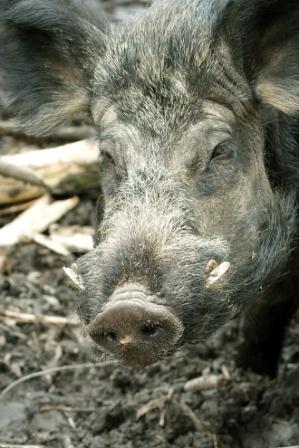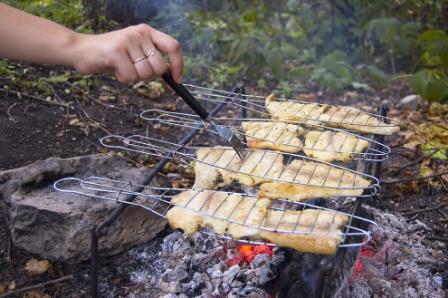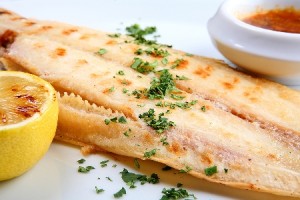Knowing How to Fillet Fish Adds Dimension to Your Skills as an Angler
By Cara Hunt

If you are learning how to fillet fish, start with a Havalon Baracuta fillet knife and you will be one happy camper.
When you head out on a fishing trip to catch largemouth or smallmouth bass, the last thing you are thinking of is how you will prepare the fish at a later time. But this can be one of the most enticing parts of the catch. What makes filleting a bass fish so exciting is that this process removes every bone in the fish, making it possible to cook your catch in a variety of different ways and savor every bite without having to pick around sharp bones.
For those anglers who are learning how to fillet fish for the first time, perfection is neither necessary nor is it immediately achievable. Filleting a bass, as with any other fish, is an art and requires patience and skill.
Before Heading Out for Bass Fishing
Before heading out on your fishing trip, you should decide whether you want to fillet your fish in your kitchen at home or take care of the task at the fishing site. Many anglers choose the latter, since it relieves them of creating a mess in their own kitchens. No matter where you choose to fillet your fish, you will need the right set of tools:
- Filleting knife that is new or newly sharpened. A Havalon knife works great.
- A cutting board or other sturdy, flat surface
- Water
- Bowl
- If you choose, textured gloves to help hold the fish and protect your hands
Make Sure You Have A Sharp Fillet Knife
First thing you need to do before you begin filleting your bass is to ensure that your knife is sharp. A dull knife will only help you to create fishmeal and will not be able to create a fillet. To see the best fishing knife for filleting bass, click here.
Next, be sure to rinse your fish to remove the slime that accumulates on the surface. You may also choose to pat your fish dry with paper towels or a cloth towel to make it less slippery and easier to handle.
Invest In A Cutting Board For Your Fishing Trips
Lay your clean, dry fish on the cutting board or other flat surface and use your knife to slice the fish behind the gills without cutting through the bones. The goal is to fillet the fish, not to remove its head. On the “spine” or center back ridge of the fish, use your knife to slice down the length of the fish to the tailpiece, beginning at your original cutline. You will know that you are cutting in the right spot if you can feel the main bone of the bass’ body structure. Cut only through the skin and meat of the fish and do not penetrate further. If you do, you will likely slice open the fish’s stomach and create a large mess.
Last, you will hold up your bass by the tail and use you filleting knife to remove the skin from the meat. Gently slide your knife between the skin and the meat and drag it down the length of the fish to head and watch the skin easily drop away.
After you have removed the skin, you will be ready to remove the internal organs and bones from the fillet, which will be as simple as finishing the slices you have made and lifting the fillet away from the bones and organs. You may need to keep your knife handy to help detach some organs and to loosen smaller or stubborn bones from the meat.
Place your cut fillets into a cooler or in the refrigerator and get ready to cook!
Click Here to See Bass Recipes from Havalon Knives
About the Author:
Cara Hunt learned hunting and fishing from her dad. She grew up to be a newspaper journalist, magazine editor, adjunct professor and freelance writer. She has lived and worked around horses all her life. Still an avid outdoorswoman, she now teaches her own children her hunting and fishing skills from their home in Salt Lake City.
6,256 total views, no views today






